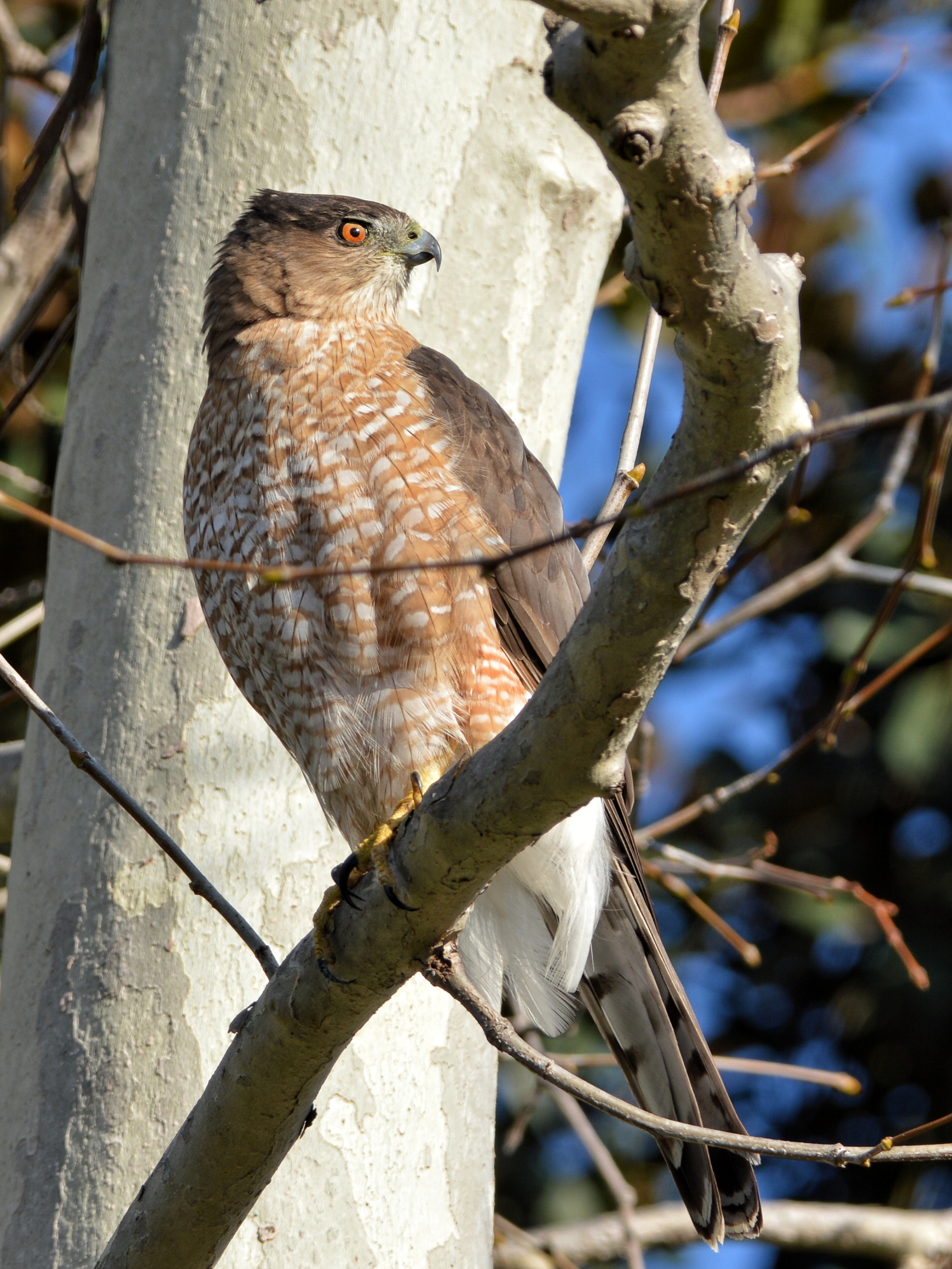Dealing with rats and mice can be a headache – rats can gnaw through concrete, metal and wood, fit through pipes the width of a quarter, and are adept swimmers (they will survive being flushed down a toilet – in fact they can crawl right back up through the drainpipe!). Both rats and mice will cause havoc by chewing electrical wires and nesting in parked cars overnight, getting into food storage bins, and contaminating items with their feces. Their natural predators include hawks and owls – species who are near and dear to us at Bloom Biological, Inc.
A lot of public attention lately has been drawn to the issue of how to control rodents like rats and mice. The California Ecosystems Protection Act (Assembly Bill 1788) is currently making its way through the California Assembly, and has begun its third reading on May 1st 2019. This act would ban the most harmful rodenticides, known as second-generation anticoagulant rodenticides (SGARs) throughout the state except in some agricultural settings and by special permit. The U.S. Environmental Protection Agency had determined that SGARs were unsafe for children, pets, and wildlife in 2008, but lawsuits from three major poison companies have dragged out the implementation of the ban. The state of California banned the toxins in 2014 but a loophole allowed the pest control industry to continue using the products. As of 2015, SGARs were no longer allowed to be sold over-the-counter in the United States.
A common misconception is that these rodenticides will only kill the rodents who ingest them. Of course any animal, including pet dogs and cats, who consume the poisoned bait itself will likely die from the effects if not treated by a veterinary hospital immediately. Clinical signs of anticoagulant rodenticides are massive internal bleeding caused by a loss of vitamin K1 (which is essential for blood clotting); if untreated, death will usually occur within 3 days. But unfortunately, making sure the bait is only accessible to the target rodent(s) won’t stop other animals from being killed by the poison. When a poisoned rodent is eaten by a predator, that predator can also succumb to the accumulated anticoagulant effects. During nesting season, owls have been known to bring poisoned rodents back to the nest, with the vulnerable owlets dying as a result. A study of Ferruginous Hawks in Colorado showed a preference for poisoned black-tailed prairie dogs, most likely because the prey becomes much easier to catch after eating the poisoned bait. But it’s not just raptors that are being affected – other predatory animals are falling victim to the effects as well. Most recently, a California mountain lion (P-47) fitted with a radio tracker in 2017 was found dead in the Santa Monica Mountains; despite having survived the intense Woolsey Fire last year, he could not overcome the effects of secondary rodenticide poisoning. Six different anticoagulant compounds were found in his liver during a necropsy. In fact, 90% of mountain lions, 88% of bobcats, and 85% of the protected Pacific Fishers tested during research by the California Department of Fish & Wildlife had detectable levels of SGARs in their system. Despite the regulations mentioned previously, research has shown that there has been no significant reduction in non-target wildlife being affected by SGARs.
In 2016, a groundbreaking research project took place in Ventura County. Karl Novak, the county’s dam safety inspector, challenged the status quo and decided to design an empirical study to test whether wild raptors could be as effective as poison to control the ground squirrel population, which were creating dangerous burrows that threatened the integrity of the county’s levee system. By erecting perches for raptors and installing a few owl boxes, he was able to show that the burrows had been reduced by 50% in areas patrolled by hunting raptors, when compared with sites still utilizing rodenticide. Not only was this method safer, it turned out to be cheaper too, with savings estimated at $7,400 per levee mile. Another experiment by Matthew Johnson with Humboldt State University, has shown that Barn Owl families in California’s Napa County can consume up to 1,000 rodents per breeding cycle, which can really add up considering Barn Owls may have more than one clutch per year.
One other benefit, perhaps not surprising to us here at Bloom Biological, is that people enjoy having raptors around. The county supervisor in Ventura County reported that many constituents wanted to know where they could get an owl box after Novak’s study results were made public. In fact, bird watching has become the fastest growing outdoor recreation and is estimated to be a $41 billion industry. Even as areas continue to be developed, raptors are adapting; it is not uncommon to see Red-tailed Hawks or Cooper’s Hawks within our own suburban Orange County, CA. They are watching and waiting, ready to get to work, hunting those pesky rodents.
“Please Stop Poisoning Our Food” PSA poster by Lili Chin (used with permission).
Local Raptors From Left To Right: Cooper’s Hawk, Red-tailed Hawk, Red-shouldered Hawk
Photos By: Nicollet Overby



